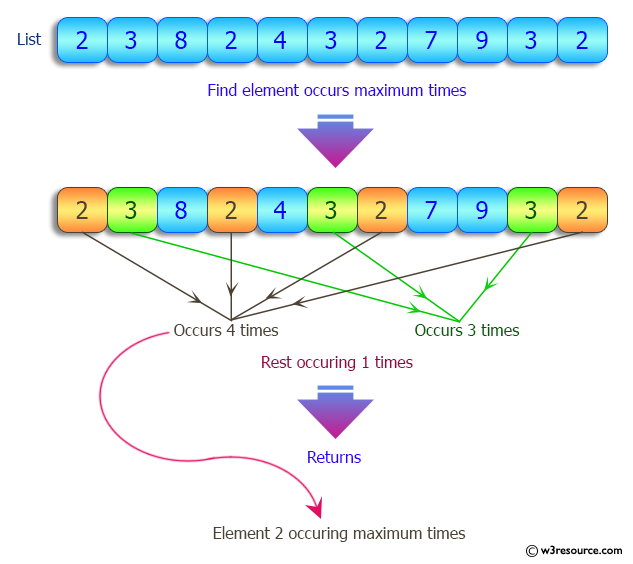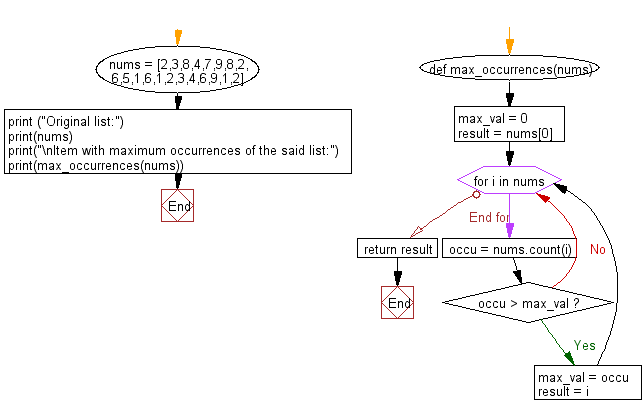Python: Find the item with maximum occurrences in a given list
Find Most Frequent Item in List
Write a Python program to find the item with the most occurrences in a given list.
Visual Presentation:

Sample Solution:
Python Code:
# Define a function 'max_occurrences' that finds the item with the maximum occurrences in a list
def max_occurrences(nums):
# Initialize 'max_val' to 0 and 'result' to the first item in the list
max_val = 0
result = nums[0]
# Iterate through the elements in the 'nums' list
for i in nums:
# Count the occurrences of the current element 'i' in the list
occu = nums.count(i)
# Check if the number of occurrences is greater than the current maximum
if occu > max_val:
# Update 'max_val' and 'result' if a higher occurrence is found
max_val = occu
result = i
# Return the item with the maximum occurrences
return result
# Create a list 'nums' with integers
nums = [2,3,8,4,7,9,8,2,6,5,1,6,1,2,3,4,6,9,1,2]
# Print a message indicating the original list
print ("Original list:")
# Print the contents of the 'nums' list
print(nums)
# Print a message indicating the item with the maximum occurrences in the list
print("\nItem with maximum occurrences of the said list:")
# Call the 'max_occurrences' function with 'nums' and print the result
print(max_occurrences(nums))
Sample Output:
Original list: [2, 3, 8, 4, 7, 9, 8, 2, 6, 5, 1, 6, 1, 2, 3, 4, 6, 9, 1, 2] Item with maximum occurrences of the said list: 2
Flowchart:

For more Practice: Solve these Related Problems:
- Write a Python program to find the least frequent item in a list.
- Write a Python program to count occurrences of all elements in a list.
- Write a Python program to find the top three most frequent elements.
- Write a Python program to remove elements appearing more than a given frequency.
Go to:
Previous: Write a Python program to rotate a given list by specified number of items to the right or left direction.
Next: Write a Python program to access multiple elements of specified index from a given list.
Python Code Editor:
What is the difficulty level of this exercise?
Test your Programming skills with w3resource's quiz.
